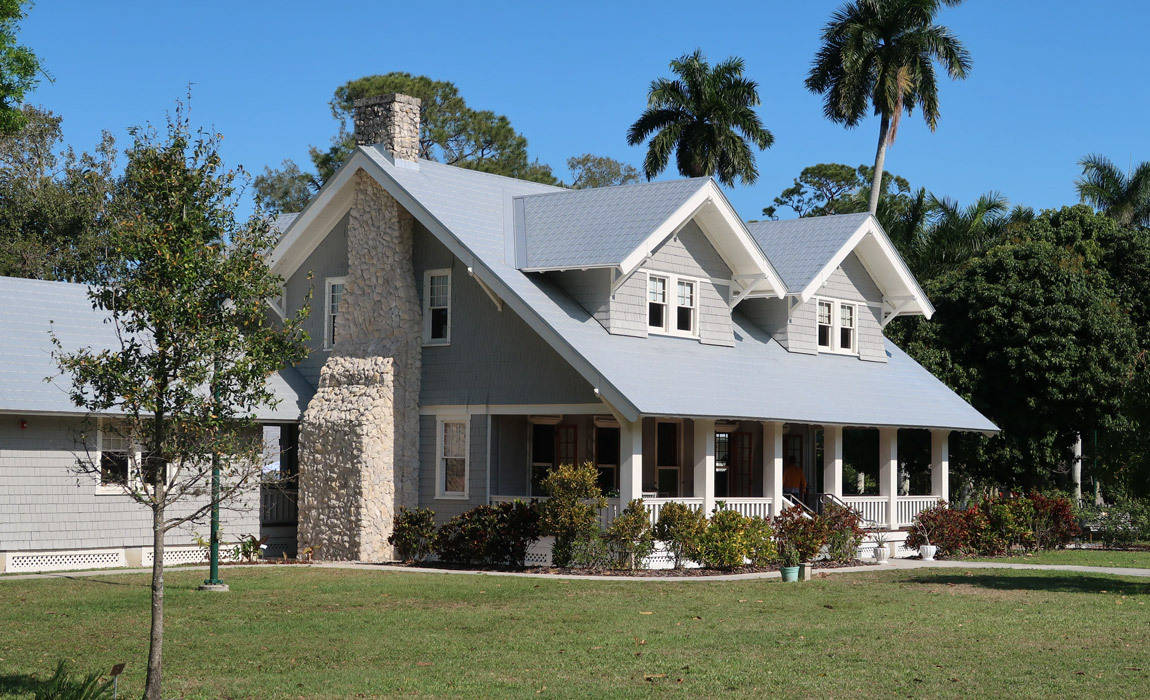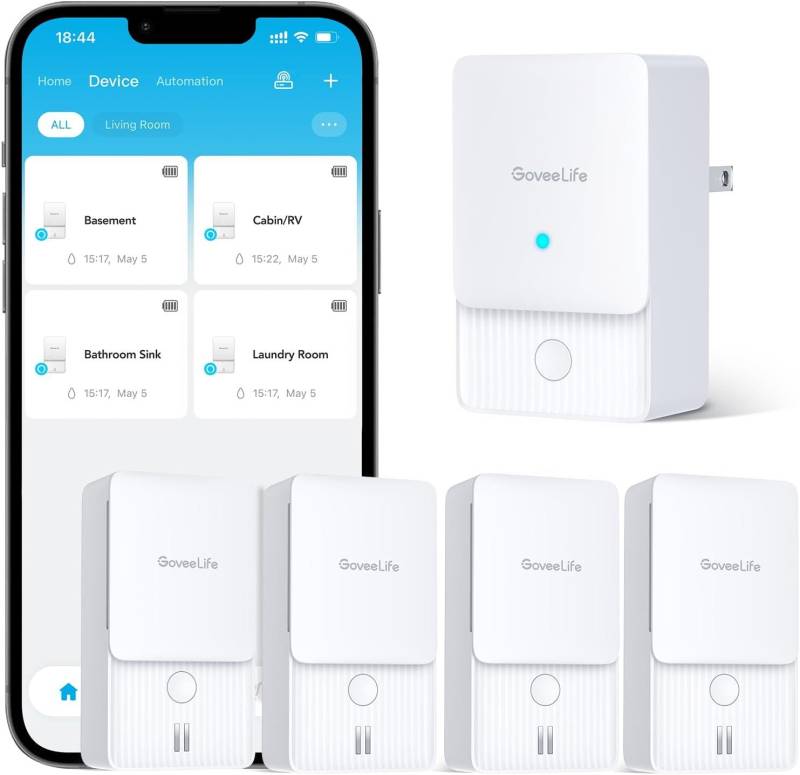A roof leak can feel like one of life’s most inconvenient surprises, especially when it’s unexpected. For men juggling work, family, and hobbies—or planning their next big guys' trip—dealing with a leaking roof is often the last thing on the list. But here’s the truth: understanding the common causes of roof leaks, recognizing early warning signs, and taking preventative measures can save you from costly repairs and give you peace of mind—especially when you’re traveling.
What's Your Next Home Improvement Project?
- Roof leaks are commonly caused by aging materials, weather damage, clogged gutters, or poor installation—knowing these causes helps prevent costly repairs.
- Signs of a leaky roof include discolored ceilings, peeling paint, musty smells, and visible shingle or flashing damage.
- Regular maintenance, like cleaning gutters, trimming tree branches, and sealing vulnerable areas, reduces the risk of leaks.
- Home tech, such as the GoveeLife WiFi Leak Detector 2 and Wyze Outdoor Camera, allows travelers to monitor leaks and damage remotely.
- Proactive roof care not only prevents leaks but also improves energy efficiency, saving money in the long term.
In this guide, I’ll break down the main culprits behind leaky roofs, share how to spot trouble before it spirals out of control and outline simple maintenance tips to keep your roof in top condition. Let’s make sure the only thing dripping on your next adventure is condensation from a cold drink.
Common Causes of Roof Leaks
Understanding what causes roof leaks is the first step toward preventing them. While a good roofing contractor can help you fix problems and seasonal maintenance checks can reduce the likelihood of issues related to storm damage and winter weather causing problems, it's also critical that you know what to do to check potential problem spots and look for red flags that an issue may be brewing. Here are the top culprits that can lead to roof leaks:
Aging Materials
Over time, roofing materials deteriorate due to exposure to sun, wind, and rain. Asphalt shingles may crack or lose their granules, while flashing can corrode or become brittle. Aging roofs are particularly susceptible to leaks in areas where materials no longer flex or seal properly.
Weather-Related Damage
Storms, hail, and strong winds can wreak havoc on your roof. Blunt force from falling branches or airborne debris often damages shingles, tiles, or flashing. Snow and ice can also cause problems, as melting and refreezing cycles push materials out of place.
Poor Installation
If your roof wasn’t installed properly—perhaps by a cut-rate contractor—it’s more likely to develop leaks. Gaps in flashing, uneven shingles, or poorly sealed vents and chimneys are common issues.
Clogged Gutters
When gutters are full of leaves or debris, water can’t drain properly. This often leads to water pooling on the roof or seeping into fascia boards, eventually causing leaks.
Structural Issues
Low spots, sagging areas, or improperly sloped roofs can trap water, increasing the risk of leaks. These areas often need regular attention to prevent long-term damage.
Signs of a Leaky Roof
Not every roof leak is as obvious as a steady drip of water into a bucket. Look for these subtle (and not-so-subtle) warning signs:
- Discolored Ceilings: Yellow or brown stains on your ceiling often indicate water seeping through.
- Peeling Paint or Wallpaper: Moisture from a leak can cause bubbling, peeling, or warping in your walls.
- Damp or Musty Smells: Persistent dampness can lead to mold and mildew, signaling a hidden leak.
- Missing or Damaged Shingles: Visually inspect your roof after storms for shingles that are cracked, curled, or missing altogether.
- Water Spots in the Attic: If you have an accessible attic, check periodically for damp insulation or water stains near roof seams.
Preventing Roof Leaks: Regular Maintenance Tips
An ounce of prevention is worth a pound of cure—or in this case, saving hundreds (or thousands) of dollars in repairs. Here’s how to stay ahead of roof leaks:
Seasonal Inspections
Check your roof at least twice a year, ideally in the spring and fall. Look for missing shingles, damaged flashing, or debris buildup. For hard-to-reach areas, consider using a drone or hiring a professional roofer.
Clean Gutters and Downspouts
Clear your gutters regularly to ensure water flows freely away from your roof and foundation. If you travel often, install gutter guards to reduce maintenance needs.
Trim Overhanging Branches
Trees near your house can pose a risk during storms. Regularly trim branches that hang over your roof to prevent damage from falling limbs.
Seal Vulnerable Areas
Use roof sealant to reinforce flashing around vents, chimneys, and skylights. These areas are often the first to leak due to gaps or wear.
Upgrade Your Roofing Materials
If your roof frequently suffers from issues like ice dams, consider upgrading to materials like metal roofing or EPDM membranes, which are more resistant to extreme weather.
Home Tech for Frequent Travelers
Investing in home technology can be a game-changer for men like myself who travel often. Devices like water leak detectors, inspection tools, and outdoor cameras allow you to monitor your home while you’re away. These tools help you stay ahead of issues like leaks, attic damage, and structural wear before they escalate into costly repairs. Think of them as an extra layer of protection for your home, giving you peace of mind no matter where your travels take you.
GoveeLife WiFi Leak Detector 2
The GoveeLife WiFi Leak Detector 2 is a reliable device that detects water leaks in areas like basements, attics, or near pipes. It sends real-time alerts to your smartphone, enabling you to address issues quickly, even while you’re traveling. This device is ideal for frequent travelers who want a dependable solution to monitor moisture and prevent water damage. I have this one in my home and it works great.
GOYOJO Dual-Light Inspection Tool
The GOYOJO Dual-Light Inspection Tool is perfect for identifying roof damage and wear in hard-to-reach spaces like attics. Equipped with a flexible dual-light design, it helps you perform thorough inspections during seasonal maintenance, ensuring that small problems are spotted before they lead to leaks or structural damage.
Wyze Outdoor Camera v3
The Wyze Outdoor Camera v3 is a weather-resistant, Wi-Fi-enabled camera that provides high-definition video monitoring of your home’s exterior. It’s an excellent tool for keeping an eye on your roof, gutters, and other exterior features, allowing you to catch potential damage caused by storms or debris. With night vision and motion detection, it’s a comprehensive option for year-round monitoring.
Conclusion: Keep the Drips at Bay and Travel Worry-Free
A leaky roof might start as a small nuisance, but it can quickly spiral into a major headache if left unchecked. By understanding common causes, recognizing the warning signs, and committing to regular maintenance, you can keep your roof in top shape and avoid costly repairs.
As a frequent traveler, staying proactive is key. By combining seasonal inspections with home tech solutions, you can head out on your next adventure—whether it’s a fishing trip with the guys or a long-overdue solo getaway—without worrying about what’s happening back home.
And here’s a thought-provoking fact to end on: did you know that a well-maintained roof can also improve your home’s energy efficiency, potentially cutting down on utility bills? Taking care of your roof isn’t just about preventing leaks; it’s about creating a safer, smarter, and more sustainable home. So, get ahead of the game and give your roof the attention it deserves—your next adventure (and your wallet) will thank you.



